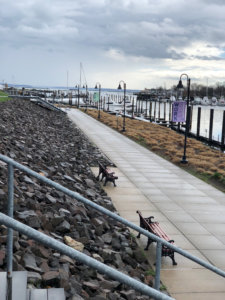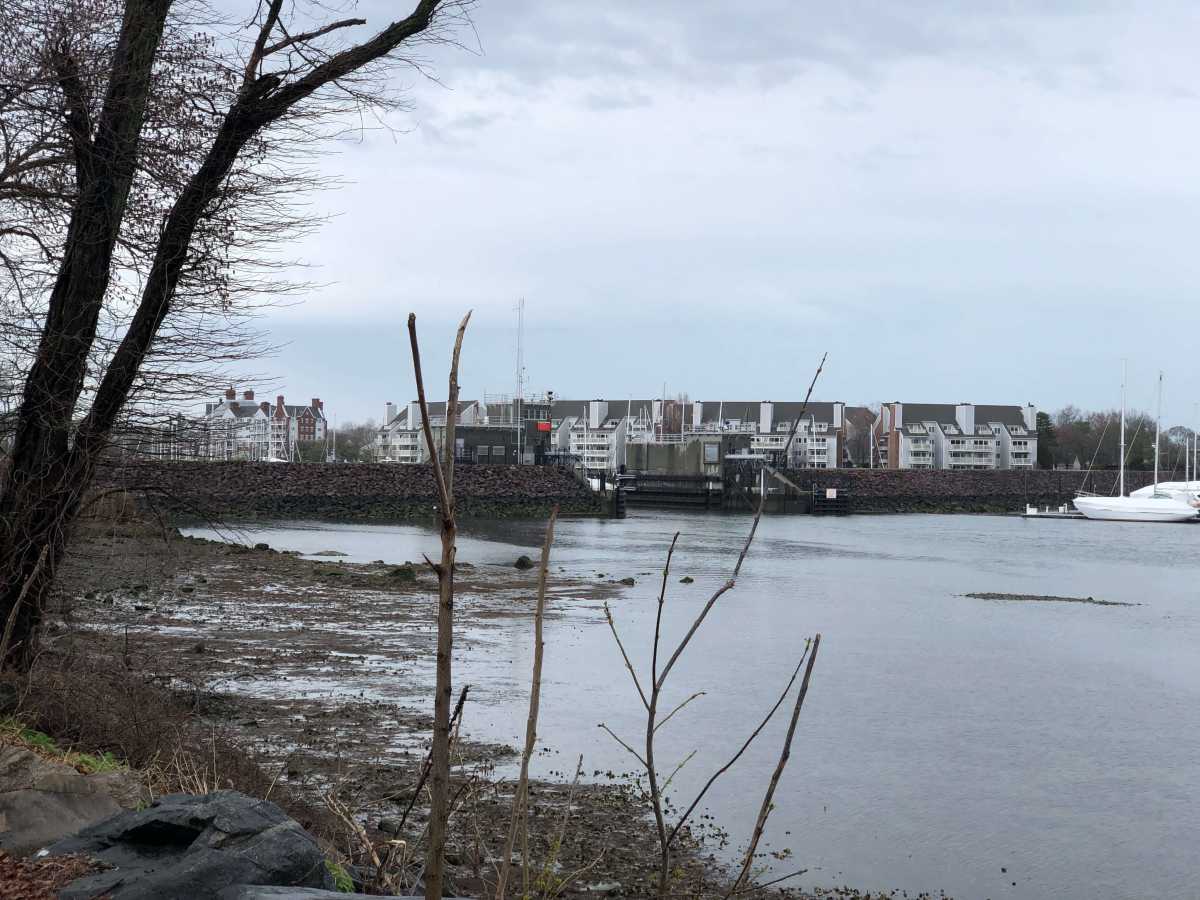When the city reopened the Rockaway Boardwalk in 2017, after a $341 reconstruction project was needed after Hurricane Sandy ravaged the original structure, Mayor Bill de Blasio called it a resilient structure, and “a barrier wall to protect the communities of the Rockaways.” But the communities on the north side of the Cross Bay Bridge have none of those protections, yet.
State Assemblywoman Stacey Pheffer Amato, state Senator Joseph Addabbo and community leaders from South Queens trekked north to Stamford, Connecticut Monday for a tour of their Hurricane Protection Barrier with an eye on flood-prone communities within their districts including Hamilton Beach, Broad Channel and Howard Beach.
The Stamford Hurricane Protection Barrier was constructed in Stamford Harbor by the U.S. Army Corp of Engineers at a cost of $14.5 million in 1969. The structures protected Stamford from damage during Hurricane Sandy and also prevented $38.4 million in damage up until that point.
“It was great to attend Stamford to get an in-person look at their hurricane barrier that helps keep their city resilient,” Pheffer Amato said. “Hamilton and Howard Beach have long suffered due to their proximity to the water and lack of protection from storm surges and flooding, which the USACE have long been aware of for over fifty years. This is exactly the kind of resiliency measure that would be perfect for long-term protection of communities bordering Jamaica Bay and I will continue to urge the USACE to consider such an option.”
Generations of residents have dealt with flooding in these low elevation communities during storms, particularly ones with full moons, but in recent years they’ve dealt with “sunny-day flooding” where streets and yards flood during highest tides in Jamaica Bay.
“It’s time the Army Corps invests in our communities especially Hamilton and Howard Beach,” Pheffer Amato added. The Department of City Planning in 2016 called the neighborhoods “vulnerable to flooding, a vulnerability likely to increase due to climate change.” The study warned that by 32050, some areas may face daily tidal flooding according to sea rise projection from the New York Panel on Climate Change.
“Traveling to Stamford was an extremely informational trip for us elected officials and community leaders. We witnessed first-hand how effective that city’s flood protection measures are,” Addabbo said. “Stamford’s Mayor David Martin informed us that his city has not seen a major flood since the United States Army Corps of Engineers installed their Hurricane Protection Barrier in 1969. I believe that a similar installation within our flood prone communities can go a long way in protecting vulnerable areas like Howard Beach and Hamilton Beach. I will continue to work with all interested individuals in urging the USACE to bring comprehensive storm protection measures for our residents.”

Community Board 10 Chairwoman Betty Bratton said the trip was well worth it.
The discussion between Stamford officials and our delegation was informative and appreciated,” she said. “USACE now needs to get busy to provide protection for Howard Beach and Hamilton Beach, sooner rather than later, in order to protect our people and prevent further negative economic impacts in our communities.”
The National Climate Assessment published in November warned that Rockaway and other low lying waterfront communities, could see regular flooding in the coming decades unless bold steps are taken to decrease carbon emissions.
“How many more studies need to be done? The research is out there. Flood barriers that include tidal gates WORK,” New Hamilton Beach Civic President Roger Gendron said. “Just think had the USACE said back in the late 60s ‘Let’s build floodgates in Jamaica Bay like we did elsewhere’ how much damage could have been avoided from then up to and including Sandy! What they need to know is if the floodgates were in place, the homes that we live in, the businesses we shop in, and the houses we worship in would not have flooded. It’s time the USACE listens to those who know their communities best, the residents.”
The discussion between Stamford officials and our delegation was informative and appreciated,” she said. “USACE now needs to get busy to provide protection for Howard Beach and Hamilton Beach, sooner rather than later, in order to protect our people and prevent further negative economic impacts in our communities.”
The National Climate Assessment published in November warned that Rockaway and other low lying waterfront communities, could see regular flooding in the coming decades unless bold steps are taken to decrease carbon emissions.
“How many more studies need to be done? The research is out there. Flood barriers that include tidal gates WORK,” New Hamilton Beach Civic President Roger Gendron said. “Just think had the USACE said back in the late 60s ‘Let’s build floodgates in Jamaica Bay like we did elsewhere’ how much damage could have been avoided from then up to and including Sandy! What they need to know is if the floodgates were in place, the homes that we live in, the businesses we shop in, and the houses we worship in would not have flooded. It’s time the USACE listens to those who know their communities best, the residents.”

































